9. Tatum O’Neal in “Paper Moon” (1973)
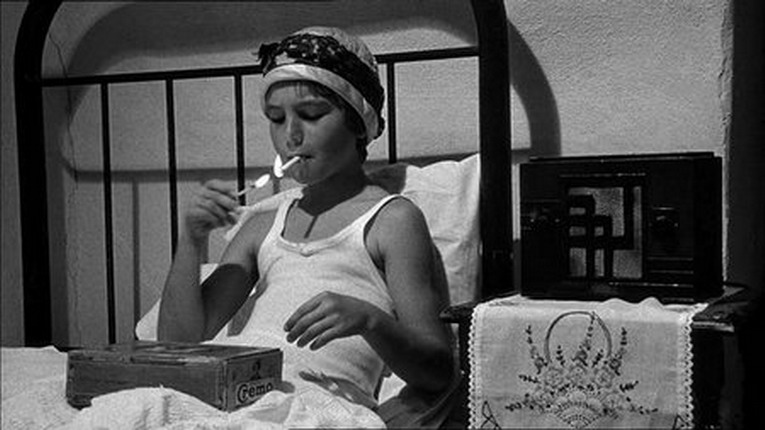
O’Neal gives a confident, smart performance. She compels attention as Addie, a nine-year-old who travels with her maybe-he-is-maybe-he-isn’t conman father. Peter Bogdanovich made a great casting decision (she acts opposite her real-life father Ryan O’Neal). They share the screen with measured chemistry and wit. The level of maturity in Addie often gives the role a comic edge. She’s brainy and strong-willed but not without a little temper.
There are several long uncut scenes where Tatum O’Neal has to deliver a heavy load of dialogue. She tackles these scenes with unwavering energy and cooperative charm.
10. Ana Torrent in “The Spirit of the Beehive” (1973)
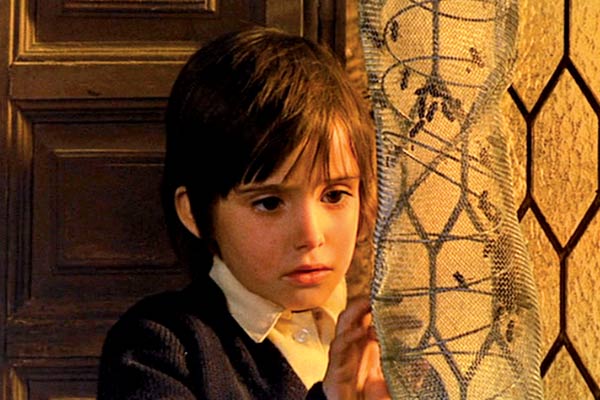
This is a lyrical film and haunting in its exploration of a child just learning about the darker complexities of life. The child is Ana, a little girl who becomes mystified by the notion of death after viewing James Whale’s Frankenstein (1931) at her town’s local theater. She looks up at the movie screen with a wide, dewy gaze.
What director Víctor Erice captures in Ana Torrent’s performance is something of a miracle: the enigma of childhood. Ana manifests the credulity of a child’s imagination with a sensitive and endearing purity. Her gentle curiosities and confusions begin to intensify and fuel a mesmeric state of mind. She’s transfixed by reality and the inability to comprehend its components at such a young age.
11. David Bennent in “The Tin Drum” (1979)
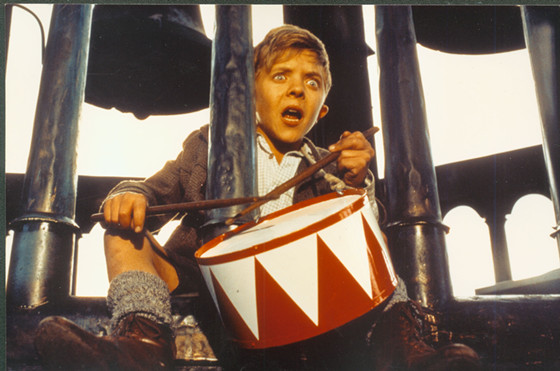
In this epic farce, David Bennent plays Oskar, a three-year-old boy who decides to remain three for the rest of his life. This film is candied with quirks.
It rides on the idea—which is perhaps too heavily conceptual—that Oskar could cease to grow simply because he wants to. And he wants to because from his knee-high view, the adult world is full of senseless war, scandal, and chauvinism. Who wouldn’t want to be forever young? But the director, Volker Schlöndorff, creates a subversive kind of youth (for a film which runs close to three hours). He’s infuriated.
We follow Oskar for two decades, while he remains a child, even as he begins experiencing sexuality. A lot of the film is grotesque but it paints on a large canvas of being a bizarre coming-of-age, anti-war farce. Bennent’s eyes are mad and simmering. He protests loudly: between the thrumming of his toy drum and his shrieking scream. He’s sometimes annoying, but admirably defiant.
12. Majid Niroumand in “The Runner” (1984)
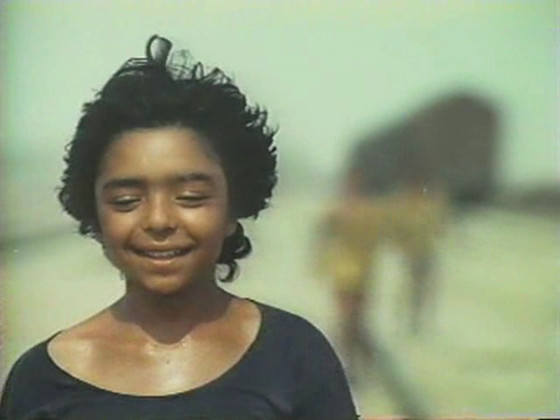
This postwar Iranian film sits on the shoulders of Majid Niroumand. His performance is brimming with energy and unfettered endurance. The film is influenced by Shoeshine and The 400 Blows, but not beholden to them. The Runner has an unforgettable look —full of beautifully vacant, soft-focus images. It lives up to its title, as well.
This vagabond youth is obsessively running. It’s his mode of freedom. He runs by himself, with blithe abandon. He runs away from drunken miscreants. He runs with fellow homeless youths, playing little preconceived games where only one of them triumphs. One of the games is to see who can chase after a passing train for the longest before giving up. Even after the game is over, he continues to run, until his friends hold him steady.
Niroumand’s character is also fascinated by boats and planes. Much of the story (as unriveting to some as it may seem) is his desire to learn how to read so he can buy magazines and know more about these kinds of transportation. He’s so proud to learn the alphabet that he loudly chants the ABCs up to the sky. Boats and planes represent crafts faster than him, which he finds captivating. As proud as he is, and as much as he runs, he remains under the idle thumb of a postwar society.
13. Aleksey Kravchenko in “Come and See” (1985)
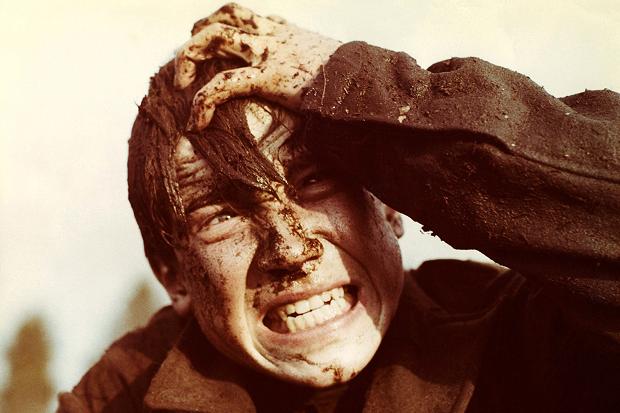
One of the most powerful, gut-wrenching films ever made. The director uses a Steadicam to glide with the young protagonist, Florya, as he joins the Soviet resistance against Nazi Germany. Kravchenko’s role is physically exhausting, trekking across vast landscapes, carrying enormous guns, and pushing his body through mucky swamps.
The film is unrelentingly grim and graphic. Florya witnesses all the atrocities of war. He’s dirtied, worn, and wrinkled by the film’s end. The extremity of his situation has forced his body to age exponentially; he’s carrying the burden of war and the guilt of violence on his conscience as well as his ramshackle exterior.
There’s a novel from 1965 called The Painted Bird, which also follows a young boy witnessing the atrocity of WWII. It’s a blistering portrait of lost innocence and likely had its impact on any subsequent work of art about a youth facing war head-on.
14. Gaspard Manesse in “Au Revoir Les Enfants” (1987)
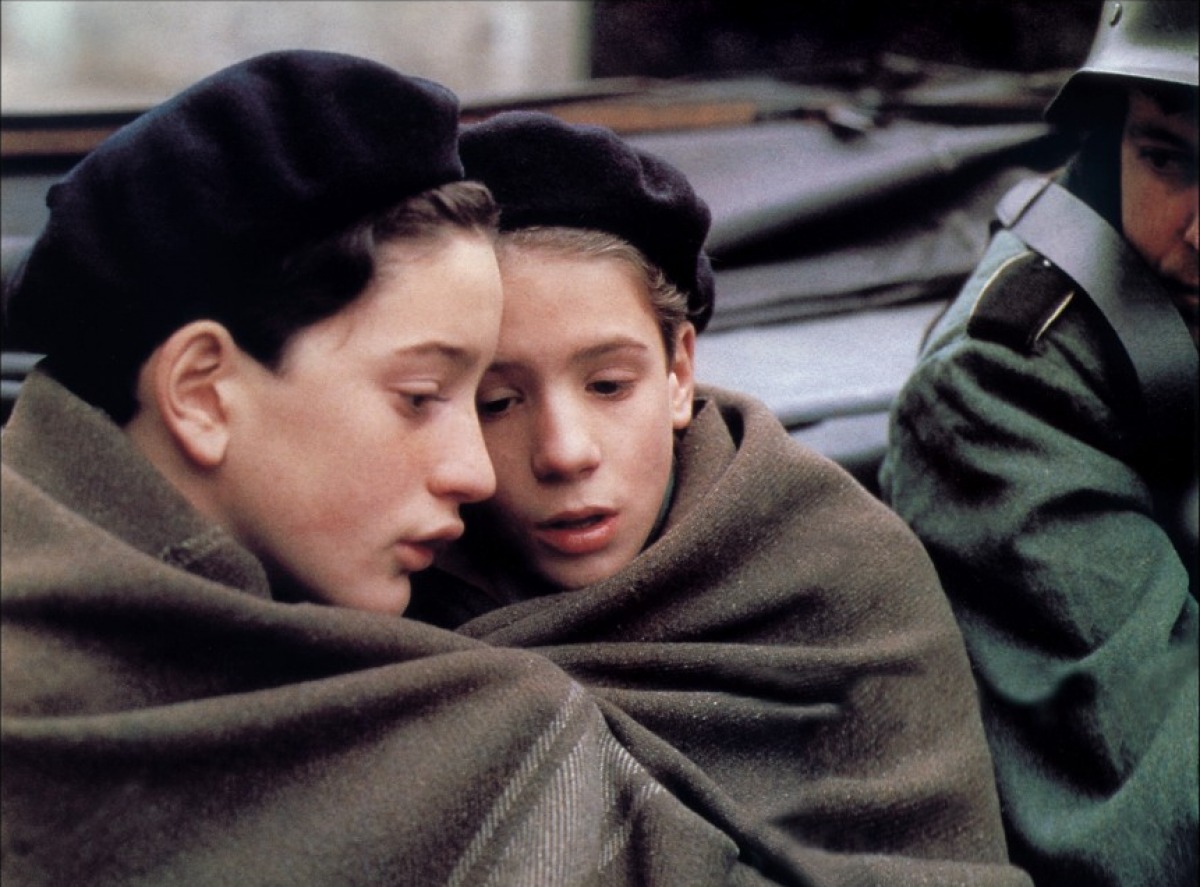
Louis Malle, a terrific director, helmed this autobiographical film. Manesse plays Julien, a student at a boarding school in German-occupied France. He befriends a new classmate, Bonnet, who turns out to be Jewish, hiding out in the school.
Julien puts on an air of arrogance when he’s in front of his friends but we’re privy to his adolescent fears and humiliations. He still wets the bed, and during a scene in the woods, when he gets lost with Bonnet, Julien is the one that’s truly scared, and needs the strength of their friendship. It’s in Manesse’s helpless expression and sad physiognomy that makes the gut-punch ending all the more emotional.
Louis Malle has often focused his films on children. For instance, he directed Zazie dans la Métro (1960), which is far removed from the cold aesthetic of Au Revoir Les Enfants. Zazie is a bouncy, slapstick film about a little girl navigating the big city of Paris all on her own.
15. Salvatore Cascio in “Cinema Paradiso” (1988)
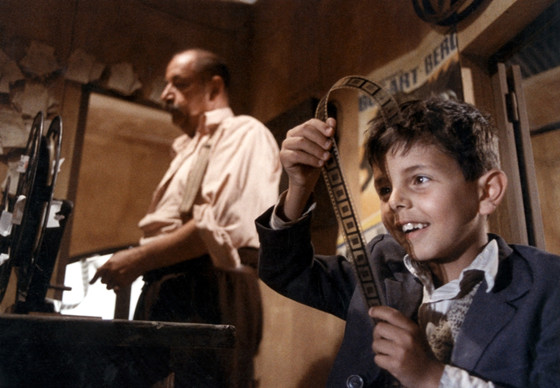
Toto is a beloved character in this film, because Cascio portrays him as bubbly and blooming.
There is a world of wonder behind the eyes of Toto. He sees cinema as pictures made from dreams. He’s a character we easily sympathize with—when he smiles, we smile. Cascio helps build an effortless chemistry between Toto and Philippe Noiret’s projectionist Alfredo.
16. Natalie Portman in “Léon: The Professional” (1994)
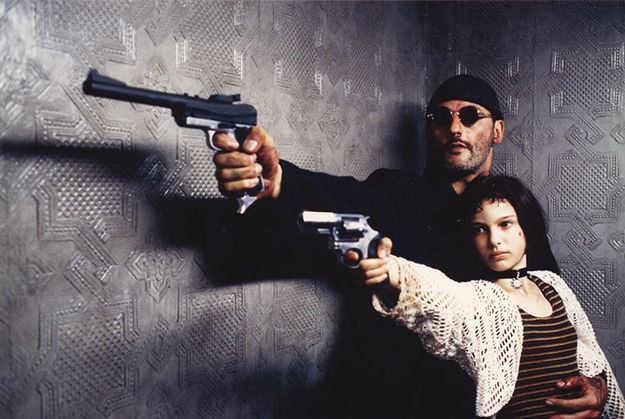
In Natalie Portman’s very first performance, she is surprisingly complex and revealing as Mathilda, a precocious girl who has to stomach the massacre of her entire family by a drug lord. She focuses her attention on revenge, and is aided by the hitman-next-door Léon (Jean Reno). Their relationship involves slow learning between the two. She is asked to be just as adult and mature as Leon, despite the large age difference.
Other times, Portman is funny, silly, sweet, and fragile. Balancing these two facets of her character is no easy task. Portman gives Mathilda a lot of emotional intelligence, from having to be headstrong in the face of violence, because she’s been exposed to it for so long, to her sly body language, and how she fills the frame with much energy and emotion.
17. Jéreémie Renier in “La Promesse” (1996)
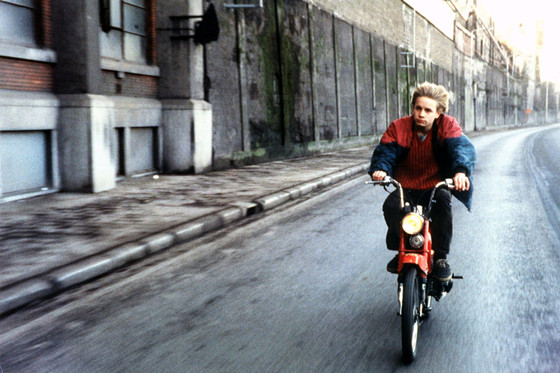
Jean-Pierre Dardenne and Luc Dardenne are sibling filmmakers who often focus on adolescence (Rosetta, The Kid with a Bike, among others). La Promesse follows their distinct pattern of understated social commentary on the lower class. Their films are not unlike the neorealism movement.
Renier plays Igor, a young boy who helps his father run a building rented to illegal immigrants. Igor has to deal with a sudden death, a cover-up, and more. It’s a lot of moral quandary for a child. Instead of following the trite coming-of-age mold, the Dardenne’s focus on Igor navigating his own conscience even if that means opposing his own family. Renier carries the film as we witness his redemptive journey.